Big Medicine for Elk
Straight-Walled Cartridges with Muscle to Spare
other By: Jack Ballard | January, 26
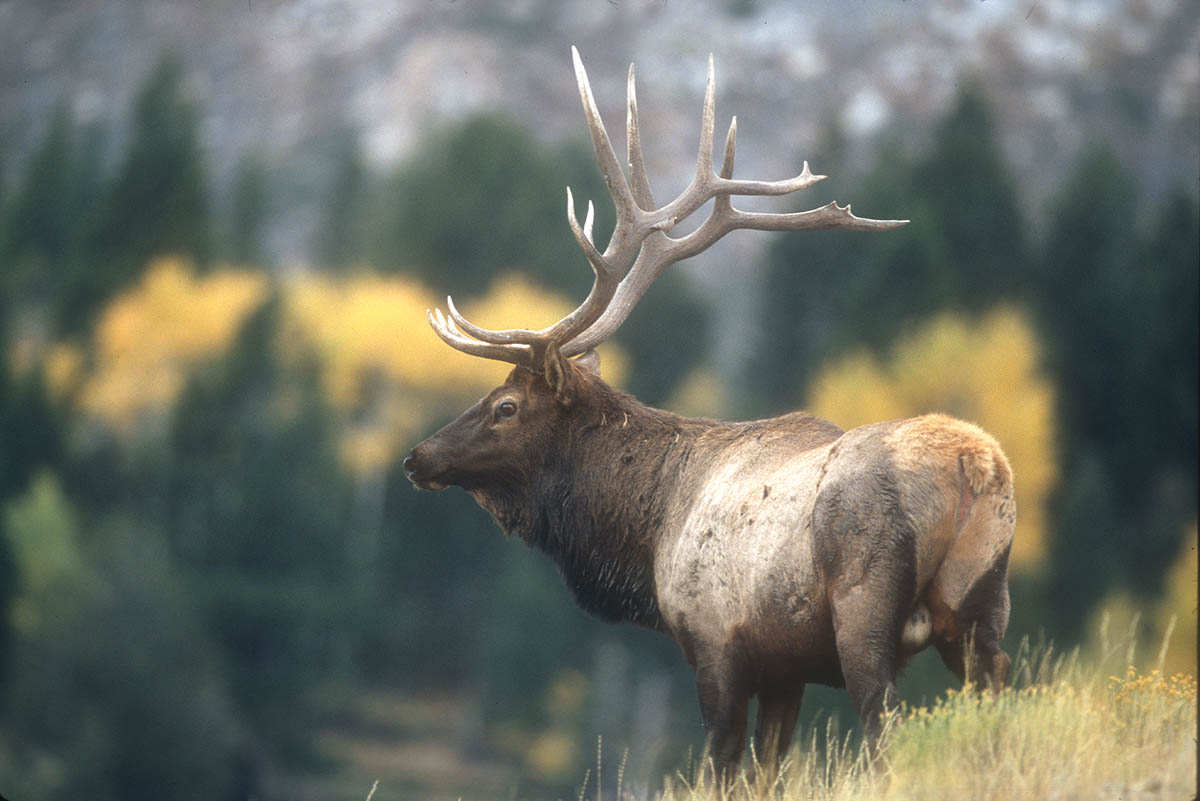
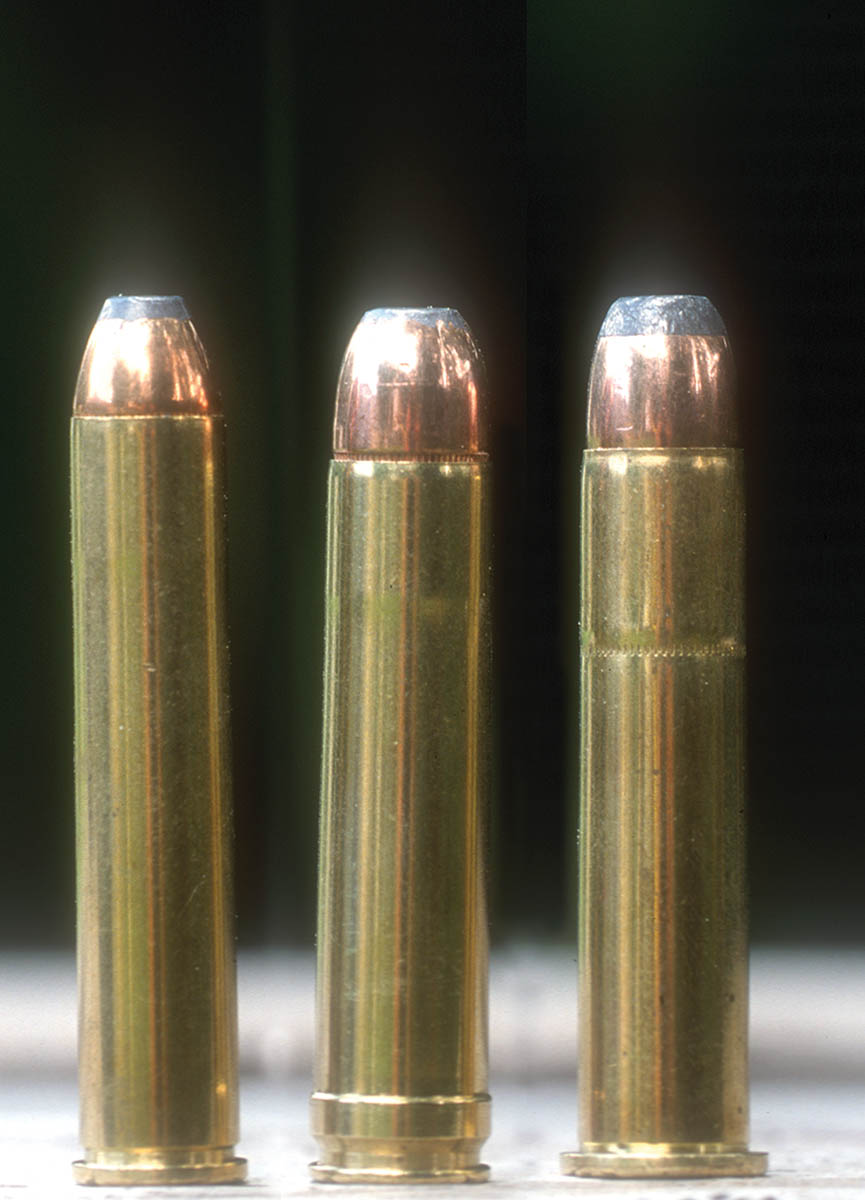
Take the American automobile in the 1960s, when gasoline gushed into the tank of a Lincoln Continental at the rate of 30¢ a gallon; bigger, as in “interior seating for a family of nine,” ruled the day. The 1969 model nudged the curb at over 5,000 pounds with a length of 18.67 feet and a width of 6.65 feet. Alongside aspirations for behemoth luxury also existed the unquenchable thirst for raw power thrust from a cast-iron V-8 coupled to a limited-slip differential and 15-inch bias-ply tires, most compellingly represented by the Chrysler 426 Hemi conservatively estimated at 425 horsepower. Nowadays, 4 cylinders hum out as much horsepower as bygone V-8s.
In some respects, the late nineteenth century and early twentieth century is an era in firearm and cartridge development that parallels the advancement of the automobile in the 1960s. Cartridges grew physically bigger and ever more powerful, a phenomenon thrust into overdrive with the development of smokeless powder. One American, an individual very much in the public eye, reflected the sentiments of the era’s aspiring gun buyers. He also commanded the resources to realize them.
President Theodore Roosevelt triggered his way through a veritable arsenal of rifles in his lifetime. “As much a progressive where rifles were concerned as he was politically,” writes Dan Aadland, who has penned a book and numerous articles on the hunting exploits of the late president. It thus comes as no surprise then, to the student of history, to discover that T.R. became infatuated with the .405 Winchester, a straight-walled cartridge designed for, not converted to, the use of smokeless powder. The .405 was wedded to Winchester’s Model 1895, a lever action with a box magazine. Roosevelt loved lever rifles. Of poor eyesight by his own admission, the lever-action repeaters allowed him several quick shots, an attribute some commentators suspect made amends for a first shot triggered shy of the mark.
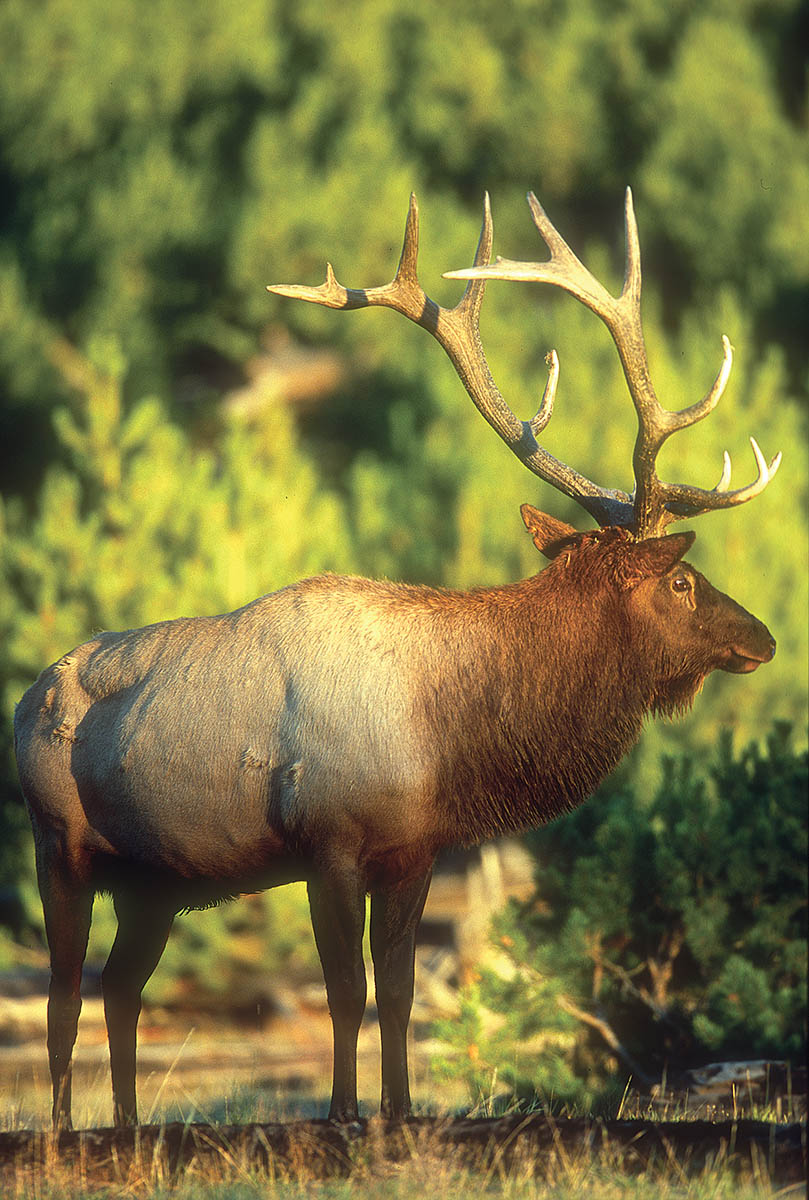
After fulfilling his term as president, Roosevelt and son Kermit set sail for Africa in 1909 on an extended safari. Rifles for the trip included three 1895s chambered for the .405 Winchester. In a later magazine article, Roosevelt concluded, “The Winchester .405 is, at least for me personally, the medicine gun for lions.” T.R. also dispatched Cape buffalo, rhino and even elephant with the .405. The cartridge was eventually nicknamed “Big Medicine,” though Roosevelt himself never referred to it as such.
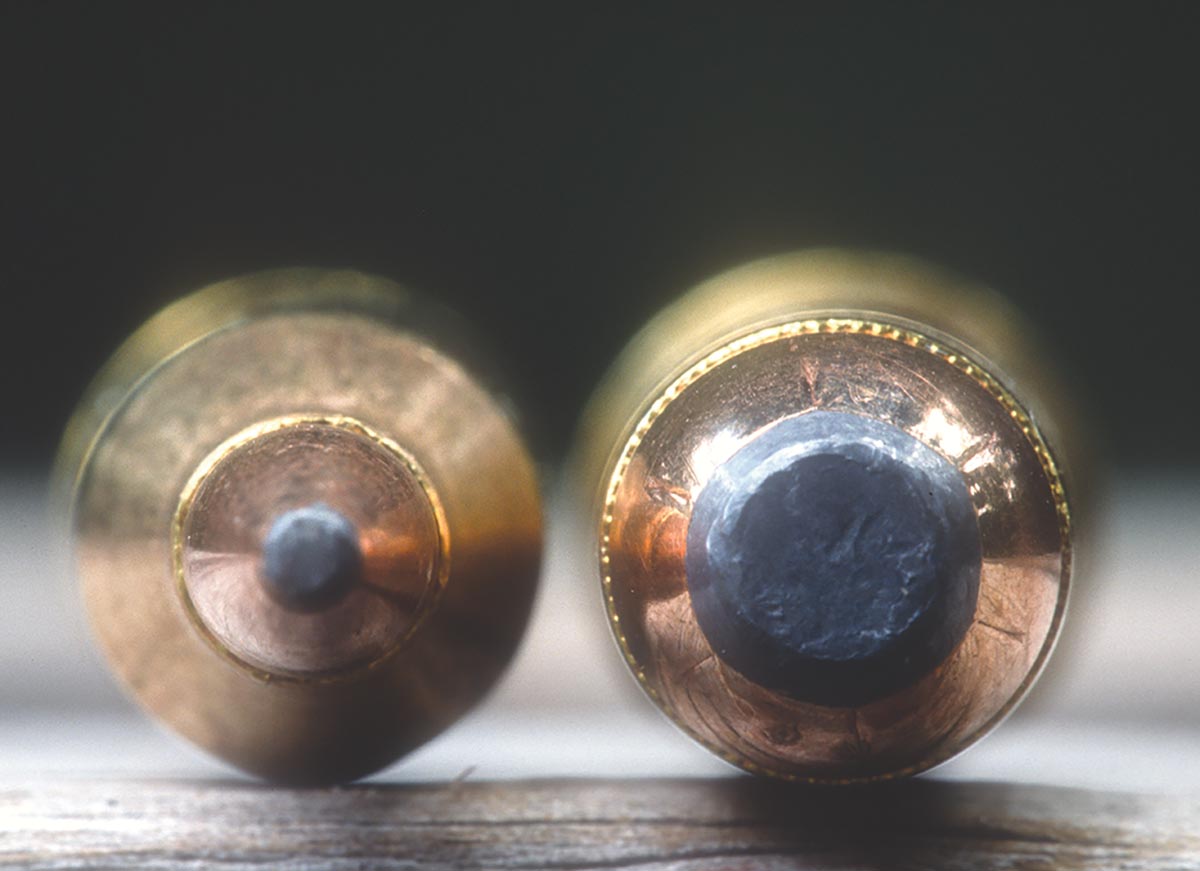
The idea of “Big Medicine” for African game seems mirrored in the sentiment of hunters who tout big-bore cartridges for North American game, but at this point terminology eludes simplicity like a garter snake dipped in olive oil in the hands of a crock-hunter wannabe preschooler. Big bore implies some minimum cartridge diameter, but let’s take it a step farther. In my swatch of the American outback (Montana), no one will dispute the rotund dimensions of the .375 H&H Magnum or the .375 Dakota. But most shooters think of those as magnums whether they’re technically designated as such or not. The .416 Rigby? Maybe not a magnum but certainly not a big bore, though it, too, has a bull neck.
Searching for commonality among the cartridges Rocky Mountain hunters might routinely tout as big bores from the bully-pulpit leads me to the following conclusions. First, a big-bore cartridge has a straight case. As soon as it’s necked, even a wee bit, it doesn’t seem quite so, well, big. Drop the neck on a cartridge, and it’s one step closer to qualifying as a big bore.
This, of course, in the minds of those wielding sharp pencils and who are sticklers for consistency, implies a .22 Long Rifle is a big bore. Not in a culture where the average medium-sized soft drink at fast-food restaurants measures a full 30 ounces. (Compare that to a 1950’s soft drink ad for RC Cola touting “2 full glasses in each 12 oz. king-sized can!”) So let’s speedily dispense of the diameter in question. To classify as a self-respecting big bore, a cartridge needs a diameter of at least .375, better yet, .40.
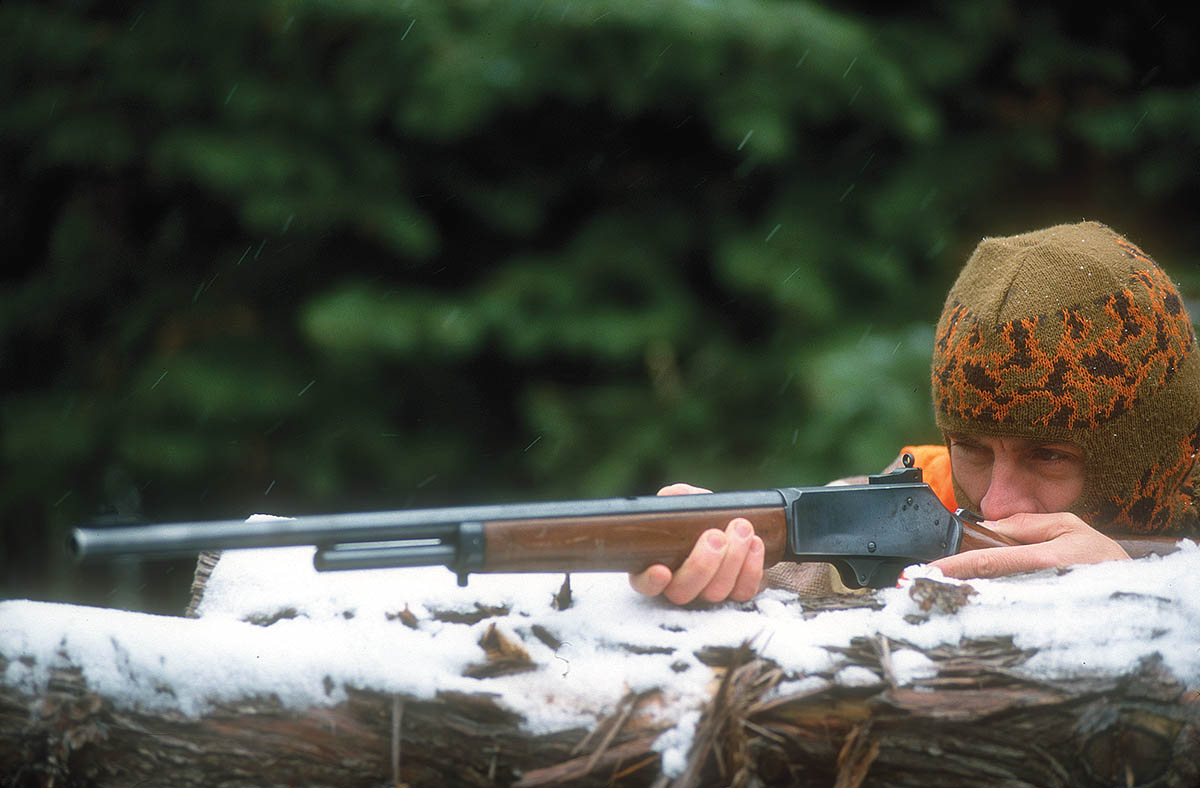
Nearly finished, let’s add one more qualifier to the definition. There is a certain amount of implied clout when you start referring to rifle cartridges in terms like Big Medicine and big bore. Modest cartridges like the .38-55 WCF that meet the other criteria need not apply.
In the hunting circles of the northern Rocky Mountains, there’s another class of cartridges that pass the big-bore test but to which the elk-stalkers aren’t referring when they speak of big-bore hunting rifles. Those are the straight-walled, .40+ calibers commonly associated with African hunting and dangerous game, shells stuffed into English side-by-sides and the like, never darkening the bores of the oh, so American lever actions. It’s not that a Wyoming wapiti hunter disregards the mass or potency of a 465-grain monolithic solid slung from a .458 Lott. He just doesn’t relate to it, much less the .500 Nitro Express, which has a much longer history as an African cartridge, its black-powder version spawned into the latter decades of the nineteenth century.
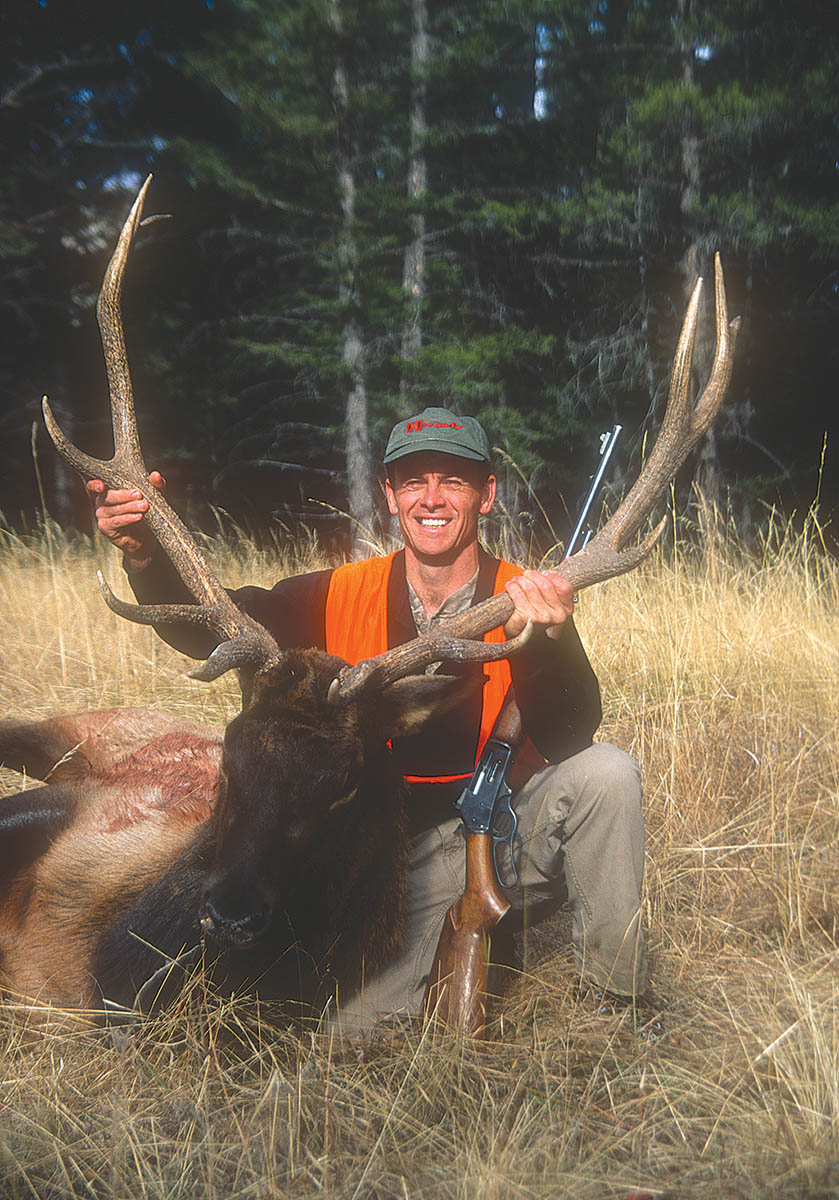
What cartridges do western hunters view as big bores? Three straight-walled, .40+ caliber cartridges easily come to mind, the .45-70, .444 Marlin and .450 Marlin. These three American big bores are chambered for a variety of production rifles (mostly lever actions) by a number of manufacturers, among whom are Browning, Marlin and Winchester. Fac- tory ammunition is available from various ammunition giants and boutique cartridge makers like Buffalo Bore of St. Ignatius, Montana (www.buffalobore.com). In short, if you’re a production rifle and factory ammunition kind of guy, there’s a big bore suitable for the elk hunt.
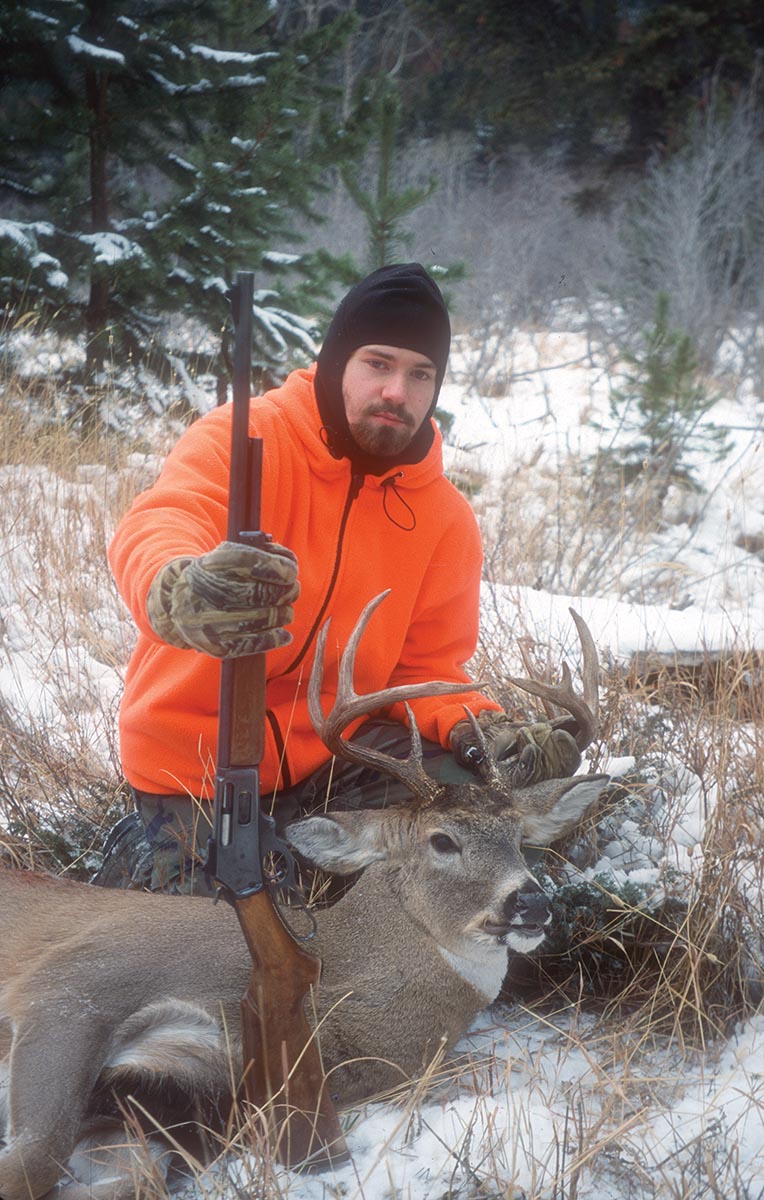
How do they stack up as elk cartridges? To make such an evaluation, let’s first clear up a common misconception about elk hunting, at least in the northern Rocky Mountains. Elk are infrequently killed at ranges beyond 250 yards. In my 35 years as an elk hunter, I’ve downed more than a few of the big brown creatures. On only three occasions have shots ranged beyond 150 yards. I walloped a spike at around 400 yards with a .444 Marlin, a 5-point at roughly 350 yards, utilizing a .338 Federal, and a small 6-point at 240 paces with a .243 Winchester. Pay little heed to clamor of the 450-yard elk takers. If the rifle and the shooter are sufficient to punch a 600-pound critter in the vitals at 200 or 250 yards, the pair can make elk medicine.
Big-bore cartridges shine at such ranges. Pretty much any of the more potent factory loads for the .444 Marlin, .45-70 or .450 Marlin are packing 1,500 foot-pounds or more energy at 200 yards, plenty to supplant an elk. However, two other factors are more important when stacking the relatively slow moving bullets from a big bore against zippier, more popular elk rounds, such as the .270 Winchester. The bullet weight from the big bore is nearly double, or more than double, that of the other cartridge. This yields more momentum, a measure of power that places equal emphasis on weight and velocity (mass x velocity) versus energy as a gauge of power that strongly favors velocity (1⁄2 mass x velocity squared).
Physics aside, there are few hunters who fail to appreciate a bullet’s ability to both penetrate and expand, the first factor important to metal reaching the vitals of an animal, the second required to create a lethal wound channel. It can be fruitfully argued that the farther a bullet expands, the greater its potential for fragmentation, a characteristic roundly criticized in hunting bullets. A decently expanded bullet from a .270 is about the same diameter as a big-bore bullet leaving the muzzle. The engineering challenges of making a bullet that both penetrates and expands sufficiently to dispatch weighty animals like elk fade as bore diameter increases. If a .45-caliber bullet slung from a big bore penetrates to the vitals of a broadside bull at 250 yards (which it will), expansion is a non-issue.
Over the past several decades, I’ve read numerous articles on the .444 Marlin, the cartridge that has accounted for more harvested elk at my family camp in the past decade than any other. The author is typically a whitetail hunter who almost invariably publishes some irritating disclaimer about the cartridge in relation to elk, along the lines of “the .444 is a fine short- to medium-range cartridge for deer that may also work for elk.” I’ll stand that one on its head. The .444 Marlin is an excellent elk round that also works for deer, as is its big-bore kin. When it comes to elk cartridges, bigger may not be better, but it’s at least as good.

